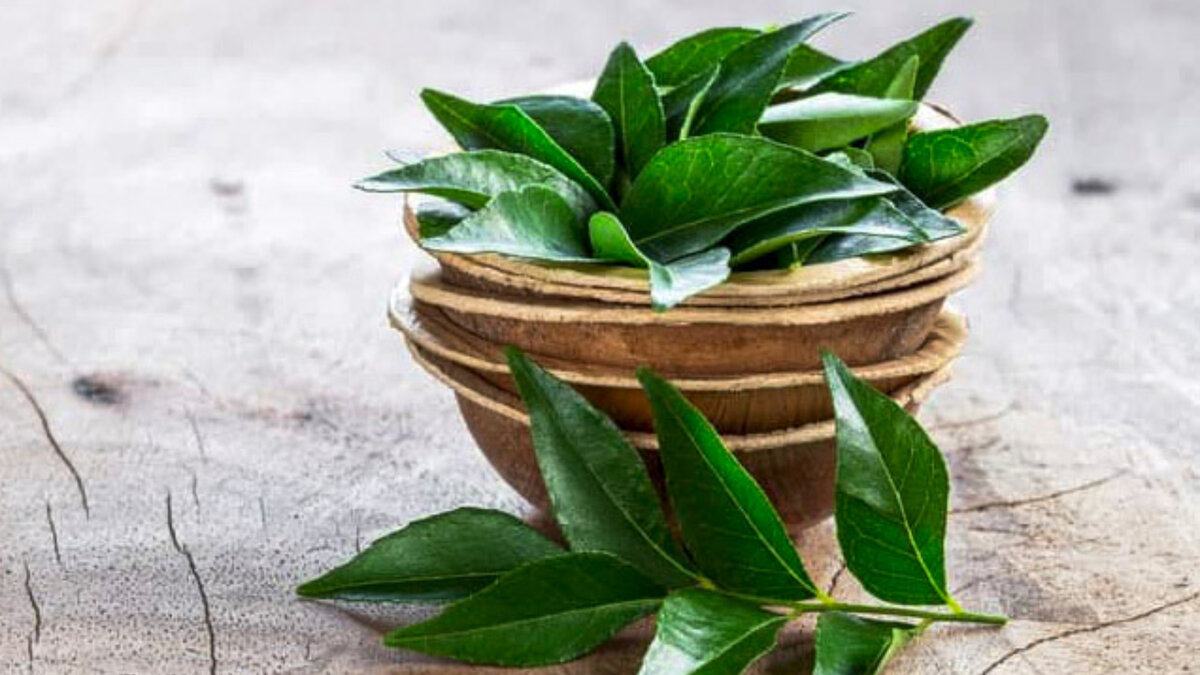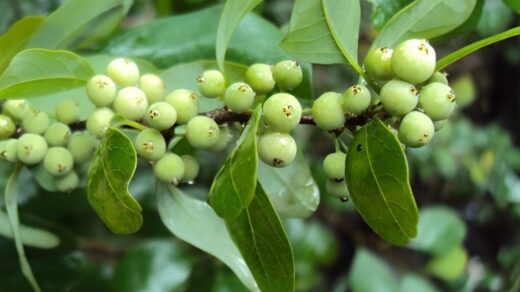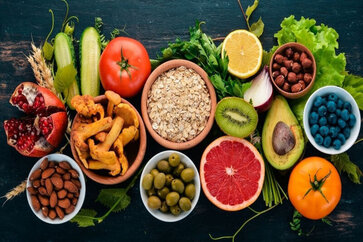Kadi Patta in English: Uses, Benefits, Side Effects, and Beyond
Kadi Patta leaves, also known as Curry Leaves, are a cherished ingredient in Indian cuisine and a staple in Ayurvedic practices. These aromatic leaves hold a treasure trove of health benefits, ranging from aiding digestion to promoting hair health.
With their distinctive flavor and medicinal properties, Kadi Patta leaves have earned a special place in both culinary and traditional healing realms. Packed with essential nutrients and antioxidants, these leaves offer a delightful way to enhance dishes while supporting overall well-being.
Whether used to temper dishes or infused with oils, Kadi Patta leaves bring a burst of flavor and a dose of wellness to every plate. Let’s delve into the world of these versatile leaves and uncover their remarkable attributes._
What is Kadi Patta?
Kadi patta, scientifically known as Murraya koenigii, are aromatic leaves commonly used as a flavoring agent in Indian cuisine. These leaves have a distinctive aroma and add a unique taste to various dishes.
Apart from their culinary role, curry leaves are known for their potential health benefits, including being a rich source of antioxidants and various essential nutrients.
They are also used in traditional practices for skincare and haircare due to their natural properties.
Curry Leaves Nutrition Facts
Curry leaves stand as a treasure trove of essential vitamins vital for the human body. As per USDA data, every 100 grams of curry leaves offers:
- Thiamine (Vitamin B1): 0.176 mg (14% of daily value)
- Niacin (Vitamin B3): 3,260 mg (22%)
- Riboflavin (Vitamin B2): 0.200 mg (13%)
- Vitamin C: 0.7 mg (1%)
- Vitamin K: 99.8 μg (95%)
- Vitamin B6: 0.105 mg (8%)
- Vitamin E: 25.24 mg (168%)
Additionally, curry leaves contain:
- Fiber: 53.2 grams
- Protein: 14.29 grams
- Iron: 19.10 mg (153%)
- Calcium: 525 mg (53%)
- Phosphorus: 367 mg (52%)
- Magnesium: 255 mg (69%)
- Potassium: 1170 mg (25%)
- Sodium: 52 mg (3%)
- Zinc: 4.70 mg (47%)
These nutritional figures underline the exceptional health benefits curry leaves offer, making them a valuable addition to various diets.
Properties of Kadi Patta
According to Ayurveda, curry leaves are believed to possess numerous beneficial properties:
- Blood Pressure Regulation: It may help lower blood pressure.
- Antibacterial Activity: Curry leaves might exhibit antibacterial effects.
- Antiviral Potential: They could have antiviral properties.
- Antifungal Effects: Curry leaves may display antifungal activity.
- Antiprotozoal Action: They might have antiprotozoal properties.
- Laxative Effect: These leaves could aid in alleviating constipation.
- Anti-Diarrheal Benefits: They may offer relief from diarrhea.
- Wound Healing: Curry leaves might aid in wound healing.
- Anti-Cancer Properties: They could potentially have anti-cancer effects.
- Anti-Diabetic Potential: Curry leaves may assist in managing diabetes.
- Anti-Inflammatory: They might possess anti-inflammatory qualities, reducing swelling.
- Antioxidant Activity: Curry leaves may act as antioxidants.
- Cholesterol Control: They could help in lowering cholesterol levels.
- Anti-Ulcer Effects: Curry leaves might have anti-ulcer properties.
- Anti-Tumor Potential: They could potentially exhibit anti-tumor effects.
These diverse properties contribute to the reputation of curry leaves as valuable natural ingredients with potential health-enhancing qualities.
Uses of Kadi Patta Leaves in Ayurveda
Ayurveda, the ancient Indian system of natural healing, recognizes the immense potential of Kadi Patta leaves, also known as Curry Leaves.
These leaves are more than just a culinary delight; they have been revered for their medicinal properties for centuries. Here are some key uses of Kadi Patta leaves in Ayurveda, presented in points for easy understanding:
1. Digestive Aid
- Kadi Patta leaves are known to stimulate digestive enzymes, promoting better digestion and absorption of nutrients.
- They can help alleviate indigestion, bloating, and gas, providing relief from gastrointestinal discomfort.
2. Diabetes Management
- Ayurveda suggests that Kadi Patta leaves can help regulate blood sugar levels.
- Compounds present in these leaves may enhance insulin function, making them potentially beneficial for those with diabetes.
3. Liver Health
- The detoxifying properties of Kadi Patta leaves can support liver health.
- Ayurvedic practitioners believe that these leaves aid in purifying the blood and promoting optimal liver function.
4. Hair Care
- Ayurveda considers Kadi Patta leaves excellent for maintaining healthy hair.
- Regular use of infused oils or pastes can strengthen hair follicles, prevent hair loss, and enhance hair shine.
5. Skin Disorders
- Kadi Patta leaves possess antimicrobial and anti-inflammatory properties.
- They can be used in Ayurvedic skincare to address conditions like acne, eczema, and minor skin irritations.
6. Cholesterol Balance
- Ayurveda suggests that Kadi Patta leaves may help regulate cholesterol levels.
- Including these leaves in the diet could contribute to maintaining healthy lipid profiles.
7. Eye Health
- Vitamin A in Kadi Patta leaves supports good vision and overall eye health.
- Ayurvedic texts mention their potential in preventing eye disorders and improving eyesight.
8. Respiratory Health
- The leaves antimicrobial properties make them valuable for respiratory wellness.
- Ayurvedic remedies utilizing Kadi Patta leaves may help soothe coughs and congestion.
9. Anti-inflammatory Effects
- Ayurveda considers Kadi Patta leaves as having anti-inflammatory benefits.
- These leaves could help manage inflammation-related conditions when incorporated into the diet.
10. Aiding in Weight Loss
- According to Ayurvedic principles, Kadi Patta leaves can boost metabolism.
- Their ability to aid in fat digestion might support healthy weight management.
11. Aphrodisiac Properties
- In Ayurveda, Kadi Patta leaves are believed to have aphrodisiac qualities.
- Certain formulations using these leaves aim to enhance reproductive health.
12. Blood Pressure Regulation
- Ayurvedic experts suggest that Kadi Patta leaves may assist in maintaining blood pressure.
- Including them in the diet might contribute to cardiovascular well-being.
13. Joint Health
- The anti-inflammatory properties of Kadi Patta leaves can extend to joint health.
- Ayurvedic remedies often use these leaves to address mild joint discomfort.
14. Nervous System Calming
- Kadi Patta leaves’ aroma is believed to have a calming effect on the nervous system.
- Ayurveda recommends their inclusion in the diet for stress and anxiety relief.
15. Oral Health
- Ayurveda values Kadi Patta leaves for their potential in promoting oral hygiene.
- Chewing these leaves or using them in oral rinses might help maintain healthy gums and teeth.
Kadi Patta Leaves Benefits
Most people think that curry leaves only add flavor to food and throw leaves while eating their soup or curry. However, they are much more important than many people believe.
Eating kadi patta leaves offers a number of health benefits without side effects below are some of them.
1. Nutrient-Rich Powerhouse
Kadi Patta leaves are a treasure trove of essential nutrients. They contain vitamins like A, B, C, and E, along with minerals like calcium, iron, and phosphorus. Incorporating these leaves into your diet can provide a natural boost to your overall health.
2. Hair Vitality and Growth
Are you tired of dealing with hair problems? Kadi Patta might be the solution you’re seeking. The antioxidants and amino acids present in these leaves help strengthen hair follicles, reduce hair fall, and enhance hair growth. Regular oil infused with curry leaves can work wonders for your locks.
3. Digestive Aid
Incorporating Kadi Patta into your meals can aid digestion. These leaves stimulate the secretion of digestive enzymes, helping the body break down food more efficiently. They also offer relief from indigestion and nausea, making them an excellent natural remedy for digestive discomfort.
4. Diabetes Management
Studies suggest that Kadi Patta leaves may have a positive impact on blood sugar levels. Compounds found in these leaves help regulate insulin activity, potentially aiding individuals with diabetes in managing their condition. However, consulting a healthcare professional is crucial before making any significant dietary changes.
5. Heart Health
Maintaining cardiovascular health is paramount, and Kadi Patta leaves can play a role here as well. Their high content of antioxidants helps reduce oxidative stress and inflammation, contributing to better heart health. Including these leaves in your diet might be a flavorful way to support your cardiovascular system.
6. Rich Antioxidant Source
Antioxidants are essential for combating the damaging effects of free radicals in the body. Kadi Patta leaves are a rich source of antioxidants like flavonoids, which protect cells from oxidative stress and reduce the risk of chronic diseases.
7. Weight Management
Struggling with weight management? Kadi Patta leaves could lend a helping hand. These leaves are known to boost metabolism and aid in fat digestion, potentially supporting weight loss efforts when combined with a balanced diet and regular exercise.
8. Skin Radiance
Who doesn’t desire healthy and radiant skin? The vitamins and antioxidants in Kadi Patta leaves contribute to skin health by preventing acne, reducing blemishes, and promoting a natural glow. You can even create face masks using these leaves for a rejuvenating skincare routine.
9. Vision Enhancement
The presence of vitamin A in Kadi Patta leaves makes them beneficial for maintaining good eyesight. Regular consumption may contribute to improved vision and a reduced risk of age-related eye disorders.
10. Reduced Stress and Anxiety
Incorporating Kadi Patta leaves into your diet might have calming effects on your nervous system. The aroma of these leaves is believed to help reduce stress and anxiety, providing a natural and aromatic way to unwind after a long day.
How to Use Curry Leaves?
Tempering Tadka: The Flavorful Infusion, is one of the most common uses of kadi patta in “tadka”, where the leaves are added to hot oil along with spices. This flavored oil is then poured over dishes like lentils, rice, and vegetables to enhance their taste.
Marinades and Spice Blends: Finely chopped or ground curry leaves can be used in marinades and spice blends. Their intense flavor infuses into the marinade, giving the dish a unique and aromatic touch.
Chutneys and Sauces: Curry leaves can be blended with other ingredients to create flavorful chutneys and sauces. These can be served as accompaniments to various dishes, adding an extra layer of taste.
Preserving the Aroma: Drying and Storing Curry Leaves, to enjoy the benefits of kadi patta year-round, drying and storing the leaves is essential. Drying can be done in the sun or using a dehydrator, followed by proper storage in an airtight container away from moisture.
Kadi Patta Leaves Side Effects: Understanding Precautions
Kadi Patta leaves, also known as Curry Leaves, offer a plethora of health benefits. However, like any natural remedy, it’s essential to be aware of potential side effects and precautions.
While Kadi Patta leaves are generally safe for consumption, certain individuals should exercise caution. Here are some important points to consider regarding the side effects of Kadi Patta leaves:
1. Gastrointestinal Discomfort:
Issue: Some individuals might experience mild gastrointestinal discomfort, such as an upset stomach or indigestion, after consuming Kadi Patta leaves in excess.
Precaution: Moderation is key. If you’re new to incorporating these leaves into your diet, start with a small amount and observe how your body reacts.
2. Allergic Reactions:
Issue: While rare, allergic reactions to Kadi Patta leaves are possible, especially in individuals with existing allergies to similar plants.
Precaution: If you have a known allergy to plants like citrus fruits or other herbs, consult a healthcare professional before consuming Kadi Patta leaves.
3. Hypoglycemia Interactions:
Issue: Kadi Patta leaves might lower blood sugar levels. People taking medications to lower blood sugar should be cautious, as excessive consumption could lead to hypoglycemia.
Precaution: If you have diabetes or are on medication, consult your healthcare provider before including Kadi Patta leaves in your diet to avoid potential interactions.
4. Pregnancy and Breastfeeding:
Issue: Pregnant and breastfeeding women should exercise caution with herbal remedies, including Kadi Patta leaves, as their effects on these conditions aren’t well-studied.
Precaution: It’s best to consult a healthcare professional before using these leaves during pregnancy or while breastfeeding.
5. Blood Pressure Concerns:
Issue: Kadi Patta leaves might influence blood pressure levels, so individuals with hypotension (low blood pressure) should be mindful.
Precaution: If you have low blood pressure or are on medication, consult a healthcare provider before consuming Kadi Patta leaves.
6. Medication Interactions:
Issue: Kadi Patta leaves potential to interact with certain medications is not fully understood.
Precaution: If you’re on medications for any health condition, especially anticoagulants, antiplatelets, or blood pressure medications, consult your healthcare provider before adding Kadi Patta leaves to your diet.
7. Children and Infants:
Issue: It’s recommended to exercise caution when introducing new foods to children and infants.
Precaution: If you plan to include Kadi Patta leaves in your child’s diet, consult a pediatrician to ensure it’s safe for their age and health status.
8. Kidney Disorders:
Issue: Kadi Patta leaves contain oxalates, which might pose a risk to individuals with kidney stones or kidney disorders.
Precaution: If you have a history of kidney stones or kidney problems, it’s advisable to consult a healthcare professional before consuming Kadi Patta leaves.
FAQs About Kadi Patta
1. What is the English name for kadi patta?
The English name for kadi patta is curry leaves.
2. Can I use dried curry leaves in recipes?
Yes, you can use dried curry leaves in recipes, but they might not offer the same intense flavor as fresh ones.
3. Is kadi patta the same as bay leaves?
No, kadi patta and bay leaves are different. They come from different plants and have distinct flavors.
4. How do I store fresh curry leaves for maximum shelf life?
To maximize shelf life, wrap fresh curry leaves in a paper towel and store them in an airtight container in the refrigerator.
5. Are there any side effects of consuming kadi patta?
Generally, consuming kadi patta in moderate amounts is safe and beneficial. However, excessive consumption might lead to digestive issues for some individuals.
6. What are curry leaves known as in India?
Curry leaves are known as “kadi patta” in India.
7. Can curry leaves be used for skin care?
Absolutely! Curry leaves possess properties that are beneficial for skin health and wound care.
8. How do I incorporate curry leaves into my hair care routine?
You can infuse curry leaves into coconut oil and apply it to your hair as a nourishing treatment.
9. What vitamins and minerals are present in curry leaves?
Curry leaves are rich in vitamins A, B, C, and E, as well as essential minerals like calcium, phosphorus, and iron.
10 . How can I use Kadi Patta for hair health?
You can infuse coconut oil with Kadi Patta leaves and apply it to your scalp. Leave it on for a few hours before washing. Regular use may strengthen hair and reduce hair fall.
Kadi patta, or curry leaves, is a small yet mighty ingredient that adds a burst of flavor and health benefits to your dishes. From tantalizing aromas to remarkable health advantages, this unassuming herb has carved its place in Indian cuisine and beyond.


























